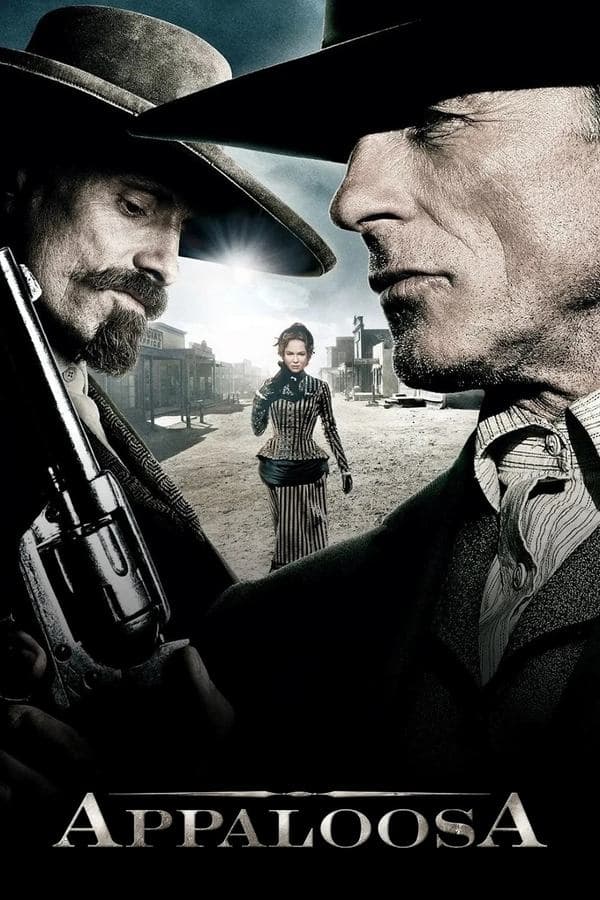
Appaloosa
2008 • Crime, Drama, Western • R
Two friends hired to police a small town that is suffering under the rule of a rancher find their job complicated by the arrival of a young widow.
Runtime: 1h 55m
Why you should read the novel
Reading Robert B. Parker’s novel Appaloosa offers a richer and more nuanced experience than the film adaptation. The book delves deeply into the complex friendship between Virgil Cole and Everett Hitch, providing insights that go beyond onscreen portrayals. Parker’s narrative voice brings a subtle humor and internal perspective that allows readers to understand the characters’ motivations and emotions on a level the film cannot match.
The novel’s pacing and structure grant space to explore the lawless world of the Old West, fleshing out supporting characters, town politics, and the shifting codes of honor among outlaws and lawmen. Parker’s prose is spare yet evocative, immersing the reader in the dusty tension of Appaloosa as violence and justice simmer beneath the surface. With more attention to dialogue and interiority, the novel brings alive the moral dilemmas that define the genre.
Choosing to read the source novel is an invitation to experience Parker’s celebrated craftsmanship in crime and western fiction. For those who relish character-driven stories and understated wit, Appaloosa offers an absorbing literary journey that extends well beyond a two-hour film, making it a must-read for Western aficionados and newcomers alike.
Adaptation differences
The film adaptation of Appaloosa makes several notable changes to Robert B. Parker’s original novel. One of the most significant differences lies in characterization—while the novel provides rich, introspective access to Everett Hitch’s thoughts and feelings, the movie takes a more external, action-driven approach, which simplifies the internal lives and motivations of both principal characters.
Another major difference is the portrayal of Allison French, the female lead. In the novel, Allison is depicted with more moral ambiguity and complexity, her relationship with the protagonists unfolding with nuanced motivation. The film, however, streamlines her character and alters certain decisions, often presenting her as more straightforward, which changes the dynamics and impact of her interactions with Cole and Hitch.
The plot itself is tighter and more condensed in the movie. Several subplots, side characters, and longer ethical debates present in Parker’s book are minimized or omitted for pacing, resulting in a faster-moving narrative but at the expense of some of the story’s darkest or most contemplative moments. This inevitably affects the development of themes like loyalty, justice, and the code of the West, offering a different emotional texture.
Lastly, the climactic events and resolution are adapted for filmic impact, sometimes prioritizing cinematic drama over the book’s narrative realism. The subtlety of Parker’s writing, especially in the way he resolves character arcs and relationships, is replaced by more clear-cut conclusions in the adaptation. These cumulative changes mean that the movie delivers a simplified version of the dense moral landscape Parker explores in his novel.
Appaloosa inspired from
Appaloosa
by Robert B. Parker



